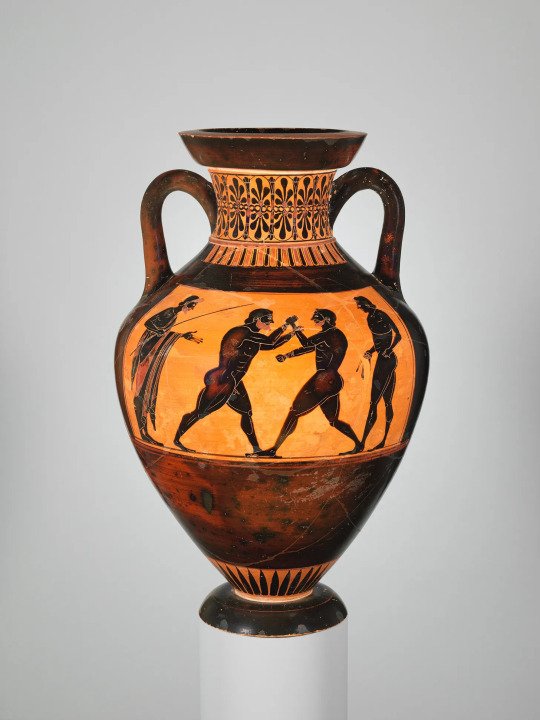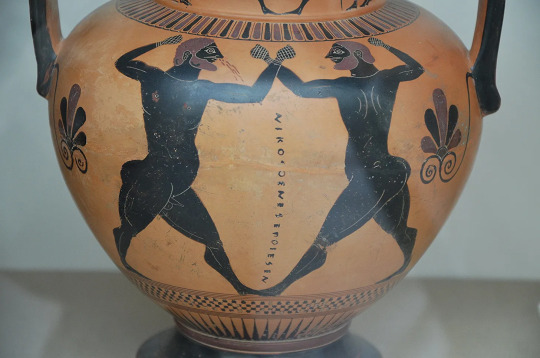#Sporting History
Text




Happy 2024 Olympics, everyone!
Since Queensland has such a long and foundational connection to sports of all shapes and sizes, we thought we would highlight some of our favourite vintage sporting illustrations from the collection. These images and thousands more can be accessed through our collection here: LINK
Credit: Illustrated covers of The Queenslander newspaper, 1928, John Oxley Library, State Library of Queensland.
#library#libraries#state library of queensland#queensland#history#from the collections#queensland history#australian history#olympics#olympic games#sports#sports history#athletes#athletics#sporting history#public domain#out of copyright#rugby#cricket#tennis#lawn bowls#slq#support libraries#vintage art#vintage illustrations#1920s#1929#1928
26 notes
·
View notes
Text





September 8th 1963 saw Jim Clark become the (then) world's youngest F1 motor racing champion.
Having come so close to the title 12 months earlier, Jim Clark and the Lotus 25 totally dominated 1963. He won seven races and only lost the remaining three due to mechanical failures.
Clark retired from the opening round (although he was still classified as a finisher), leaving Graham Hill to record the first of his five wins around the streets of Monaco. The Scotsman then won the next four races to take command of the championship. That run ended when engine problems slowed him at the Nurburgring, allowing Surtees past to score his first win for Ferrari.
The Italian GP followed and once again the organisers wanted to use Monza’s combined road and banked course. But the banking was abandoned after initial practice when some teams protested that these corners were too bumpy and dangerous. Clark duly triumphed in the race to clinch his first championship.
Graham Hill won the United States GP after electrical problems left Clark on the grid. The new champion then charged through the field to finish third and he won again in Mexico. The final race of the year in South Africa gave the irrepressible Clark his seventh victory, a record for wins in a single season that lasted until the championship was expanded to 16 races. With England’s Hill and Surtees the only other winners, drivers from the British Isles won every race in 1963.
To this day, Clark remains the only driver to have won the F1 drivers’ title and the Indianopolis 500 endurance race in the same season (1964). Out of his 72 Grands Prix starts, Clark won 25 races and achieved just over 30 pole positions.
13 notes
·
View notes
Text
Women in Sports: Rodeo (Book, Elizabeth Van Steenwyk, 1978)
You can digitally borrow it here.

#internet archive#book#books#obscure books#rodeo#women in sport#women in sports#sport history#sports history#sporting history#1978#1970s#70s
7 notes
·
View notes
Text
"Archery in the Olympics is really badly* represented"
*as in, "under-"
I'd love to see more varied archery representation at sporting events! Archery isn't just modern target recurve.
(If you like my videos, please consider supporting them on Patreon, or sign up to my College of Arrows if you want to learn different archery techniques)
8K notes
·
View notes
Text
BOOK REVIEW - Terror in the City of Champions: Murder, Baseball, and the Secret Society that Shocked Depression-Era Detroit by Tom Stanton

I finished reading this book the night of the Lions' playoff game against the San Francisco 49ers. I'm writing this review the night after, knowing they've lost.
There was a time Detroit was not the dark horse in sporting achievement; when people looked to the Motor City as a pillar of strength. Coming out of prohibition with record unemployment, Detroit boasted industrial power as America's automobile capital, and it would boast physical prowess as it cornered four of America's greatest exports: Baseball; Football; Boxing; and Hockey.
But beneath the shining veneer of the "City of Champion" lay a dark heart: a gun-toting, hood-wearing mob known variously as the Bullet Club, the Wolverine Club, or the Black Legion.
This is a book in two parts, really. In 1934 and 1935, as Mickey Cochrane takes on the role of the Tigers' player-manager, we chart the rise of Detroit in the sporting world. In baseball their team finally takes shape and they begin a meteoric rise; in boxing Joe Louis wins Detroit's Golden Gloves championship and starts his world champion climb; a small football team moves from Portsmouth to become the Detroit Lions, and is immediately a powerhouse. The first half of this book centres on the achievements of the Tigers and Joe Louis, as they upset the world of baseball and boxing respectively. The whole time there is an undercurrent of malice as we learn about the Black Legion coming together, growing in numbers - swelling their ranks with terrified prospects swearing an oath at gunpoint - but there is little activity to truly shock. Whilst they are, at this point, a club of racists, they do little in the way of heinous acts.
It's in the second half that the Legion comes to the fore. Started in Ohio following the collapse of the Klan, the group expanded to Michigan and in the 1930s it began its reign of terror. We principally follow Dayton Dean, a middle-ranking member of the Legion who is caught up in many plots - the attempted murder of Detroit attorney Maurice Sugar; the bombing of Ecorse mayor Bill Voisine's house; and any number of racially- or religiously-motivated attacks and murders. In the final third of the book we are witness to the murders he partakes in, ordered by higher-up Legion members, and the following investigations which drag the cult into the light and tear away its hood.
Both stories are equally gripping. The tremendous highs of Detroit baseball and boxing mix well with the seedy underbelly of segregationist, isolationist fascism growing in America's heartland. But it's fair to say that they are not exactly intertwined - the closest we get to a scandal in Tigers baseball involving the Black Legion is Mickey Cochrane's friendship with Harry Bennett, the Ford factory's union-busting second-in-command, who may or may not have been a Legion member. There is much speculation on Stanton's part as to whether Legionnaire's crowded the stands at Navin field to watch the Tigers win their games, but for the most part it can only be left at that: speculation.
But that's not to say it's bad. As I say, it's really a book in two parts. And if you take the baseball story and you take the crime story, and you look at them as two separate wholes, they both draw you in and keep you reading. I think both sides are important: the story of Detroit as a sporting powerhouse, something we can look to for hope for the future; and the story of the Black Legion, a far-right menace that met in community centres and basements and plotted to kill black people and Catholics and Jews.
In the wake of the Detroit Lions making the playoffs - and in the current political climate, with the right-wing threat ever-present and growing as another US election draws near - Terror in the City of Champions is a book worth keeping in mind.
#Book Review#Year of Learning#History#Sporting History#Baseball#Football#Boxing#Joe Louis#Detroit Tigers#Detroit Lions
0 notes
Text
Congratulations to the Final 3 in the Women's 100m 🏃🏾♀️
Julien Alfred
10.72 🥇🇱🇨


Julien Alfred makes history by winning St. Lucia’s first-ever Olympic medal, clocking a lifetime best of 10.72

Sha'Carri Richardson
10.87🥈🇺🇲

Mellissa Jefferson
10.92 🥉🇺🇸

💜💜💜 CONGRATS LADIES 💜💜💜

#women's history#woc#poc#celeb#shacarri richardson#julien alfred#melissa jefferson#team st. lucia#team usa#black history#black women#black woman magic#olympics track and field#womens track and field#womens sports#sports#womens 100m#olympics#paris olympics#2024 olympics#olympics 2024#olympics paris 2024#paris 2024#paris olympics 2024#paris france#paris#2024 paris olympics
437 notes
·
View notes
Text
no thoughts just kevin being such a little nerd that he went out of his way and convinced riko to be a history major with him
#partially this is in my head because it’s fucking hilarious#but also it lends more importance to kevin’s major#like he genuinely has a passion for something outside of exy#enough that he actually pursued it even though it caused extra work for him that could have been focused on exy#idk this started with me cracking up of riko scourge-of-the-masses-king-of-exy being a fucking history major#but now i’m emotional about 17 year old kevin finding a way to have a life outside of the sport even if he still had riko with him#like he actually wanted something besides exy#idk why this is important to me but it is#all for the game#aftg#tsc#the sunshine court#tsc spoilers#the sunshine court spoilers#kevin day
528 notes
·
View notes
Text

Olympic Games
— by Vasily Petrovich Vereshchagin
#art#artist#artblr#painting#art community#oil on canvas#oil painting#olympics#olympic#olympic games#olympian#olympians#artists#classical art#historical painting#historical art#art history#art gallery#fine art#sports#art blog#classic academia
265 notes
·
View notes
Text

#black butler#kuroshitsuji#yes this was poorly made with paint#also i dont particularly care im not going to watch#but i hope yaoi makes an unironic comeback after this#alongside sports anime#so history repeats itself
2K notes
·
View notes
Text
Every montage about Olympics history: And Jesse Owens won, disproving Hitler's theories and humiliating him in Berlin in an inspiring moment of resistance.
"Wait, why were the Olympics held in Nazi Germany?"
AND WHEN THE OLYMPICS RESUMED AFTER WORLD WAR II...
275 notes
·
View notes
Text

The trials and tribulations of a road trip. Broken down and waiting for a tow.
Montana
1962
#vintage camping#campfire light#montana#classic cars#rv life#history#camping#road trips#travel#sport craft#1960s
263 notes
·
View notes
Text

Michael Jordan at the NBA's All-Star Slam Dunk Contest, February 10, 1985, by Andrew Bernstein.
#michael jordan#basketball#icons#1980s#black excellence#history#fashion#80s#nba#nike#style#sports#black tumblr#air jordan#black history#culture#sneakers#chicago bulls#retro#celebs#aj1#inspiration#🚨
361 notes
·
View notes
Text







On July 16th 1970 the 13th Commonwealth Games opened in Edinburgh.
The Edinburgh games are remembered for some firsts, will be remembered for a number of firsts. It was the first time that metric distances and electronic photo-finish technology were employed at the Games.
Scots will further remember the Games for the Stewart brothers Ian (gold) and Peter (4th) in the 5000 metres and Lachie Stewart (no relation) who took gold in the 10000 metres. Forty-two nations sent a total of nearly 1,744 athletes and officials to the first Edinburgh Games. New medal winning nations included Tanzania, Malawi and St Vincent.The 9 sports were featured in the Games – Athletics, Badminton, Boxing, Cycling, Fencing, Lawn Bowls, Swimming and Diving, Weightlifting and Wrestling.
Australia topped the medal count with a total of 82, Scotland were fourth with 25, 6 gold, 8 silver and 11 bronze.
16 notes
·
View notes
Text

RIP Willie Mays 😥
Photo: Willie Mays with the Minneapolis Millers in 1951 via Minnesota Historical Society
#willie mays#baseball#hall of fame#minneapolis#minnesota#twin cities#downtown#travel#history#midwest#aesthetic#wanderlust#vintage#sports
256 notes
·
View notes
Text
I just think it's neat!
3K notes
·
View notes
Text
Ancient Greek boxing was a violent sport, with fighters' bare knuckles wrapped in a leather thong that cushioned their hands and allowed them to throw more punches. Referees carried long sticks, presumably to separate boxers, as shown on this amphora:

And this one gives a sense of the visceral nature of the combat, as one fighter’s nose spews blood:

{Buy me a coffee} {WHF} {Medium} {Looking Through the Past}
Much more on the history of ancient boxing:
330 notes
·
View notes